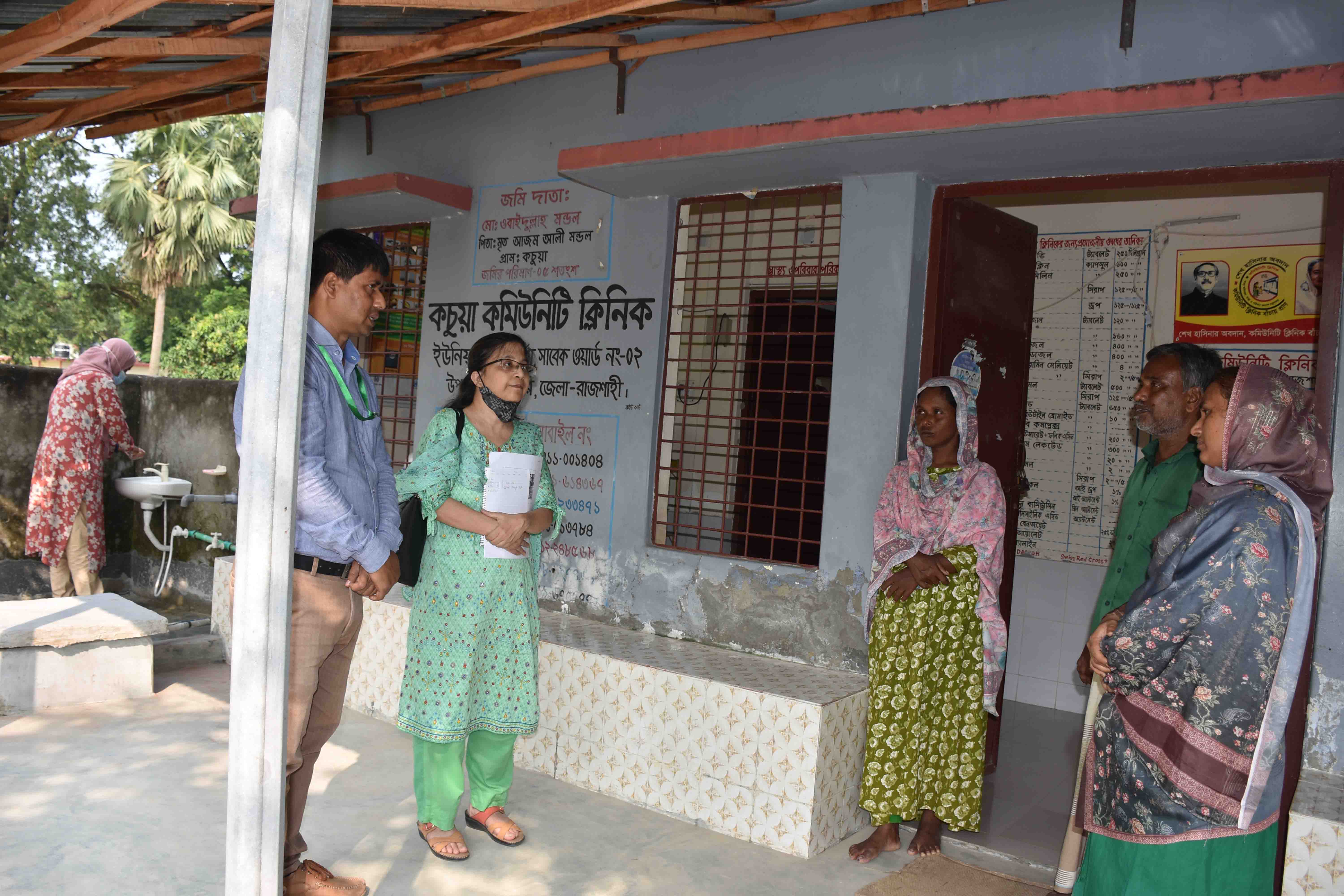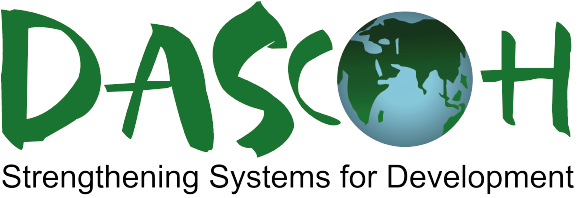
Project Name: Public Health Improvement Initiative in Rajshahi (PHIIR) Phase III
Project Implementation Period: October 2019 to September 2022
Funding Agencies: Swiss Red Cross (SRC)
Project Areas: 110 Community Clinic, 42 Family Welfare Centre and Union Sub Centre, 5 Upazila Health Complex
Total Project budget: 89,174,657
Project goal/objective: Contribute to an improved health status of the target population with special focus on maternal, neonatal and child health through health system strengthening to cover PHC system in Rajshahi division.
Description:
Swiss Red Cross-DASCOH Foundation intends to contribute to an improved health status, with a special focus on Maternal, Neonatal and Child Health (MNCH). In more specific terms this means, that improvements will be evaluated against their ability to extend timely antenatal care (ANC) / postnatal care (PNC), dispense essential drugs, including antibiotics, correctly and rationally, and ensure proper nutritional screening of under 5 children.
Union health facilities, support to emerge as a credible intermediary agency of MNCH services that effectively render ANC/PNC/Family Planning commodities, 24/7 normal delivery services along with newborn care and integrated management of child illness services.
Furthermore, the Upazila Health Complexes, the apex level of the primary health care (PHC) system, will be transformed into a well-equipped (Logistics) , properly staffed, and duly capacitated primary health care structure that manages MNCH referrals with improved emergency obstetric care services, follows clinical protocols, leverages updated technologies, and has strong referral linkages with the secondary and tertiary health care system.
The project expects to contribute to the national and interlinked SDG 3 of universal health coverage and realizes that this will mean addressing institutional capacity constraints across the entire primary health care system that is from Community Clinics at the lowest level, to Union health facility, at the intermediate level to Upazila Health Complex at the upper level.
The two successive phase of this project ensured successful reform and functionalities of community structure to aid Community Clinics to continue to deliver quality preventive, promotive and basic health care services and to improvement of continuum of care across the entire primary health care system. Based on the achievements, learnings and findings from previous phases and to attain strategic objectives; an approach with the following distinguished features have been designed. 1. Application and adaptation of community based approaches involving voluntary community health care; 2. Partnership with government and private sectors actors; 3. Strengthening the policy link and newer forms of social accountability mechanism.
Swiss Red Cross-DASCOH Foundation also aims to integrate disaster risk reduction in supporting PHC institutions to be prepared to function in major emergencies by taking necessary measures with regards to human resources, infrastructure equipment and efficient delivery of quality services.
Achievements of the project
1. Ensured 73.68% skilled HR (Total HR-33/42 and contributory HR-14/19) by active initiative, consultation and coordination with relevant health and family planning departments and Facility Management Committee (FMC)
2. Average 52.61% mentorship and supervision visits accomplished by project technical experts for comprehensive service delivery at UH&FWC level in both Rajshahi and Naogaon district.
3. 78.57% UH&FWCs are ready for providing 24/7 safe delivery care and well off services are continuing at the project catchment area.
4. Reformed Management committee of CC and UH&FWC of project area for making sure functionality of the respective facilities regarding smooth management/maintenance.
5. Leveraging proven capacity of selected health service providers, facility management committee members, LGI body and 126 volunteers of Rajshahi and Naogaon district.
6. Infrastructural preparedness by necessary renovation and equipped facility with necessary instruments, emergency and essential drugs support for improved MNCH services.
7. Promoted quality services through applying “5S” Total Quality Management at Upazila Health Complexes, Union Health and Family Welfare Center and Community Clinics in developing and implementing plans for its trickle down.
8. Execution of referral mechanism is using through a universal referral forms at 3 tiers (CC, UH&FWC, UHC), maintaining records in registers in regular basis, proclaiming referral directory and a unified agreement is signed with local transport owners for fetching MNCH patients
9. Developed PPH & Eclampsia protocols partnering with Obstetrical and Gynecological Society of Bangladesh (OGSB) and also disseminated for national level replication
Geographic Coverage
Facilities: 157 health facilities (110 CC, 42 UH&FWC/USC, 5 UHC) with
1,046,669 population at 5 Upazilas (Bagmara, Charghat and Tanore in Rajshahi district and Sapahar & Porsha in Naogaon district)
Outcome
Outcome 1: Sustainable access to MNCH services at Government primary healthcare facilities (CC, UH&FWC/USC, UHC) is ensured.
Outcome 2: Quality of MNCH services at government primary healthcare facilities (CC, UH&FWC /USC, UHC) is improved.
Outcome 3: Health behaviour regarding RMNCH is changed.




